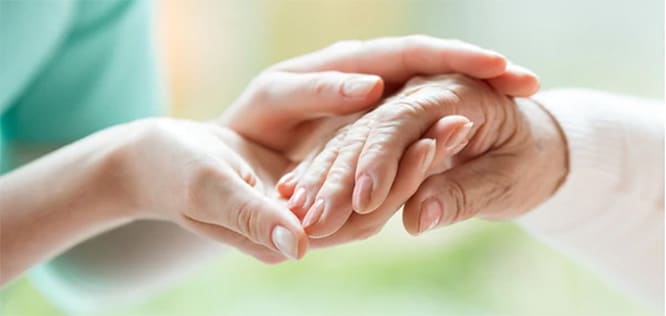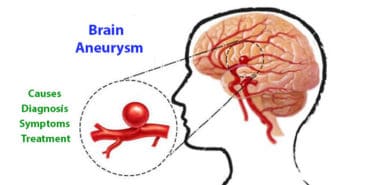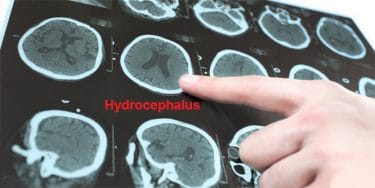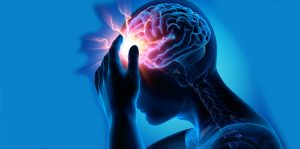Parkinson’s disease is a slow progressing neurological disorder that is generally seen between 55 and 65 years of age and causes damage to brain cells. The most typical symptoms are frequent tremor in the hands, legs and arms; disrupted balance, slowed movements and loss of coordination occurs. Parkinson’s disease patients have rigidity in their arms and legs, and they may suffer from gait and speech problems. Parkinson’s is not a fatal disease, however, complications caused by it can lead to fatal outcomes; depression, swallowing and chewing problems, constipation, urinary problems and sleep disorder are common in Parkinson’s patients. In addition, certain drug therapies and surgical methods can provide significant improvements for some patients.
Table of Contents
What is Parkinson’s disease?
Parkinson’s disease is progressive and irrecoverable neurological disorder that develops with the death of nerve cells in the midbrain. Gradual death of these neurons in the brain leads to the reduction of dopamine, a substance carrying information between neurons, causing loss of muscle movement control.
Studies showed that symptoms of Parkinson’s disease arise when the half of the neurons in the midbrain are lost. As symptoms worsen, patients may have difficulty in walking, speaking or performing simple tasks.
Although symptoms vary among individuals, tremors of hands and arms, and imbalanced movements must be taken into consideration for early diagnosis. Parkinson’s disease is becoming more and more common around the world and there is no cure yet; however, disease progression can be slowed and symptoms can be reduced with early diagnosis.
Causes of Parkinson’s disease
Parkinson’s disease is caused by the death of nerve cells in the brain. Nerve cells in the midbrain are responsible for the production of a chemical called dopamine. Dopamine acts like a messenger between brain and parts of the nervous system and helps brain to control and coordinate the movements. If these cells are dead or damaged, dopamine in the brain decreases. This leads to slow and abnormal movements in the patients.
Genetic modifications and environmental factors are thought to play a combined role in the development of Parkinson’s disease. Scientists believe that some pesticides used in agriculture and industrial pollution may be contributing factors in the disease development.
Symptoms of Parkinson’s disease progress slowly with a mild course at beginning; there are many different symptoms related to disease and these can vary among individuals.
Symptoms of Parkinson’s disease
- Tremors in hands and arms, increasing at rest
- Slowed physical movements
- Rigidity and stiffness in the arm and leg muscles
- Occasional painful muscle cramps
- Balance problems and loss of sense of smell
- Neuralgia
- Urinary problems and constipation
- Penile erection problems in men
- Difficulty in sexual arousal, and orgasm disorder in women
- Sudden drop in blood pressure, dizziness, blurred vision or fainting
- Excessive sweating
- Difficulty in swallowing,
- Excessive saliva production
- Sleeping problems
- Cognitive and psychiatric symptoms
- Depression and anxiety
- Mild cognitive disorders
- Other symptoms like dementia, more serious memory problems, personality changes, seeing things that do not exist (visual hallucinations) and believing in incorrect things (delusions) also accompany Parkinson’s disease.
Diagnosis of Parkinson’s disease
Parkinson’s disease is diagnosed with detailed medical history obtained from the patient and physical examination. During the physical examination, patients can be asked to perform simple mental or physical tasks such as talking with them about the problems faced or having them move.
Brain imaging or a special blood test is not mandatory for the diagnosis of Parkinson’s disease. These methods are used to eliminate other causes that are included in the differential diagnosis of the disease.
Stages of Parkinson’s disease
Parkinson’s disease affect people in different ways and each individual has different symptoms. And stages of the disease vary depending on the symptoms. Parkinson’s disease is consisted of five stages.
- First stage: Patients generally have mild symptoms that do not prevent them from performing their daily activities. Tremor and other movement symptoms occur only on one side of the body. Changes in posture, gait and facial expressions can be observed.
- Second stage: Symptoms become more apparent and start to get worse. Tremor, rigidity and other movement symptoms affect both sides of the body. Gait problems and poor posture is observed. The individual can still live alone, however, daily tasks become more difficult.
- Third stage: This is the mid-stage and loss of balance and slowed movements are the most important symptoms. Individual can still act fully independently; however, activities like dressing and eating become significantly difficult.
- Fourth stage: Symptoms become severe and limits the individual at this stage. Patients can stand without help; however, they need assistance in their daily activities and have difficulty in living alone.
- Fifth stage: Stiffness in the legs makes it very difficult to stand and walk. The patient needs a wheelchair or is bedridden. Nursing care is required for all activities. Patients may experience hallucinations or delusions.
Treatment of Parkinson’s disease
Among neurodegenerative brain disorder, only Parkinson’s disease responds well to the treatment. In Parkinson’s disease, it is very important for patients and their families to cooperate with the doctor for many years. There is no standard treatment for Parkinson’s disease.
Treatment of Parkinson’s patients can vary based on their symptoms and drug therapy or surgical treatment may be preferred. Other treatments include lifestyle changes like getting more rest and exercise. There are many medications available for the treatment of Parkinson’s symptoms; however, these are yet to be successful in reversing the effects of the disease.
Medication of Parkinson’s disease
Although there are general guidelines available for doctors to choose treatment regime for Parkinson’s disease, doctors may prefer different applications based on the individual. Selection of drug therapy, current symptoms, other existing health conditions (and medications used for their treatment) and age are among the determining factors. Drug doses varies significantly depending on individual needs and metabolism of each patient.
As Parkinson’s disease is caused by dopamine deficiency in the brain, some Parkinson’s drugs mimic the effect of dopamine. These drugs are called dopaminergic drugs. Such drugs help to reduce muscle rigidity, improve speed and movement coordination and decrease tremors. It must be noted that drugs are a part of the general plan in Parkinson’s treatment.
Some drugs that are used for the treatment of Parkinson’s disease and mimics the dopamine deficiency in the brain are: Levodopa, KOMT inhibitors, MAO-B inhibitors, Dopamine receptor agonists, anticholinergic drugs and amantadines.
Surgical treatment of Parkinson’s disease
Surgical treatment of Parkinson’s disease is performed for patients with tremors and unresponsive to drug therapy or suffering from deep motor fluctuations.
Deep Brain Stimulation (DBS) in Parkinson’s disease
Brain pacemaker surgery in Parkinson’s disease is performed by placing two electrodes to the determined areas of the brain. A pacemaker, similar to a cardiac pacemaker, is implanted subcutaneously to the chest and electrodes are connected to this pacemaker via connectors extended from under the skin.
Then, frequencies and stimulation parameters that are suitable for the patient are adjusted using a computer. After the surgery, patients frequently go for control visits for two to three weeks and optimal settings are adjusted during this period.
A generator that control and coordinates the movements is implanted to the patients in neurostimulator operations. Known as `brain pacemaker` colloquially, this procedure is performed for advanced stage patients who are unresponsive to drug therapies.
However, surgical treatment is not a definitive treatment and performed to increase the life standard and decrease dependency to other by reducing or completely eliminating the complaints. Stem cell treatment approaches and genetic therapies aimed at root cause of Parkinson’s disease are still being investigated and are promising treatment options for the future.
Parkinson’s disease spoon
Parkinson’s disease is a difficult process both for the patients and their relatives. Patients struggle with many of their daily activities due to restricted movement. Eating of course is the most important aspect as a fundamental need. Parkinson’s disease spoon, manufactured by Google, helps Parkinson’s patients to eat more comfortable, senses the tremoring hand and significantly prevents shaking by keeping the hand steady.
Nutrition in Parkinson’s disease
A singular diet is not effective for the treatment of Parkinson’s disease or its symptoms; however, a healthy and balanced diet is generally very helpful for overall health. Eating fruits and vegetables helps remaining energetic, food and drinks rich in fibers alleviate constipation symptoms or low blood pressure.
Herbal treatment for Parkinson’s
Clinical trials conducted in the past decade investigated antioxidant treatment for Parkinson’s disease, however, no concrete evidence was found to associate antioxidant with Parkinson’s treatment. Below are the medicinal plants thought to be good for Parkinson’s disease:
- Fava bean: Some drugs used for Parkinson’s treatment contain levadopa. Fava bean also contains levadopa. However, there is no concrete evidence that supports its use as treatment.
- Omega 3: Patients who suffer from secondary symptoms of Parkinson’s disease, such as dementia and confusion, are recommended to consume more salmon, scaldfish, soya bean, flax seed and shell beans. These contain omega-3 fatty acids, which can improve cognitive functions.
- In addition; some of the antioxidant containing nutrients are listed below
- Walnut, pistachio
- Blueberry, blackberry, goji berry, cranberry and elderberry
- Tomato, pepper, aubergine
- Spinach and cabbage
- Maintaining a diet rich in these nutrients provides the highest antioxidant intake.
Recommendations for Parkinson disease
- Always work with your doctor about your illness.
- Exercise regularly and eat well.
- If you are spilling beverages due to tremors, try using a straw. Use spoons and forks with a thick handle. Also, choose battery-powered or chargeable toothbrushes with thick handles.
- In order to help you stay fit, you may participate in less tiresome activities like walking, gardening or yoga instead of more active sports like tennis and cycling.
- Install handles on both sides of the toilet. Place a stable and low stool in the bathtub. Sit down while taking a bath for your safety.
- Put a chair in front of the toilet to sit down while washing your hands and face. Attach a handle to the walls in the bathroom.
- Having a hard and narrow bed with handles (beds with adjustable head and leg part with a powered controller) to assist while getting up will be very helpful for the patient.
- Join music therapy groups. You can improve your sense of rhythm and movements by exercising and walking with music.
- You can try speech therapy. This therapy focuses on sound, breathing control, and intensity and speed control. It includes exercises in front of the mirror aimed at mimic and tongue muscles. It attempts to improve swallowing and chewing functions.
- Consultancy on all psychosocial needs like sexuality, hobbies, driving, and social life must be provided for Parkinson’s patients.
- Stretching moves can be applied to arms, legs and bodies of the patients before they get off the bed in the morning.
- Carpets, rugs, threshold or irregular objects that may cause falling at home must be removed. Patients can perform walking exercises at home using parallel lines drawn on the floor. These exercises can ease taking steps.




